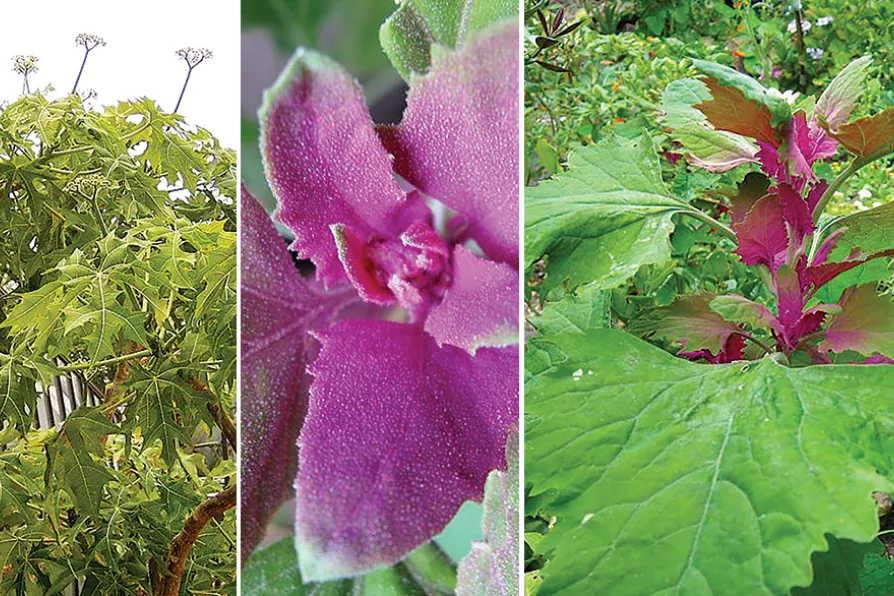The catastrophe unfolding in Gaza – where Palestinians are freezing to death in tents – is not a natural disaster but a calculated outcome of Israel’s ongoing blockade, aid restrictions and continued violence, argues CLAUDIA WEBBE

 Tree spinach
[(L to R) Frank Vincentz/CC - Zoey Kroll/edibleoffice/CC - Zoey Kroll/edibleoffice/CC]
Tree spinach
[(L to R) Frank Vincentz/CC - Zoey Kroll/edibleoffice/CC - Zoey Kroll/edibleoffice/CC]
I ALWAYS think Tree Spinach is a slightly off-putting common name for what is known botanically as Chenopodium giganteum. The mental image of a spinach plant the size of a tree really doesn't capture the essence of a quite delicate looking annual, with foliage in bright and almost playful green and magenta.
Admittedly, it can grow pretty tall — between 3 and 6 feet (1-2m) — though it is easily kept below that by removing the growing tip.
The “spinach” part of the name tells you that it has edible leaves, the word spinach being in this context a general rather than specific term. The older leaves can indeed be used as cooked greens; they’re OK, nothing special.

MAT COWARD sings the praises of the Giant Winter’s full-depth, earthy and ferrous flavour perfect for rich meals in the dark months

MAT COWARD rises over such semantics to offer step by step, fool-proof cultivating tips












